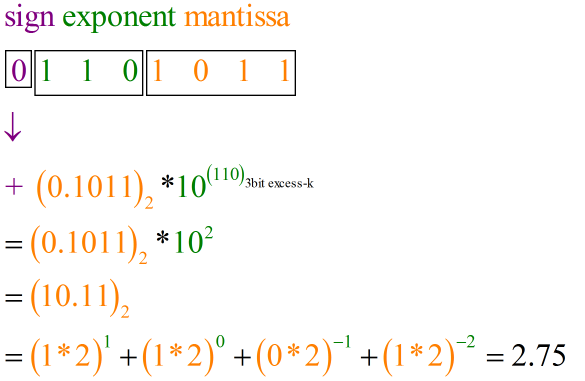[is just my fifty cent analogy about floating point, just wanted understand if there is a more better analogy or not]
Analogy:
You have the cake ingredient that are the mantissa and the time of cooking that is the exponent, you can use the oven and it will grown as plus or the fridge and it will grown as minus.
Diagram:
Example:

Plain english:
Technical Definition:
the mantissa is a 3bit excess-k or offset where the 0 is indicating the minimal negative and 1 is indicating the maximal positive value.
Mantissa come from Latin and literally means adder or filler.
Error
rounding error:
you put too much baking powder and you throw away the other part because doesn’t fit the oven anymore (bit forced analogy).
removing significant digit:
is when your plate is more little than the cake you made…
like you get 0.0000001 6digit but you can represent only 3
removing information, absorbed information:
you add so much little quantity of poison to the cake that the final product is no different.
so is like a normal cake but with poison!
243.00000000013
0000000013 is thrown away
but if you use 243 in some calculation it can “poison” your final resoult making the error more big.